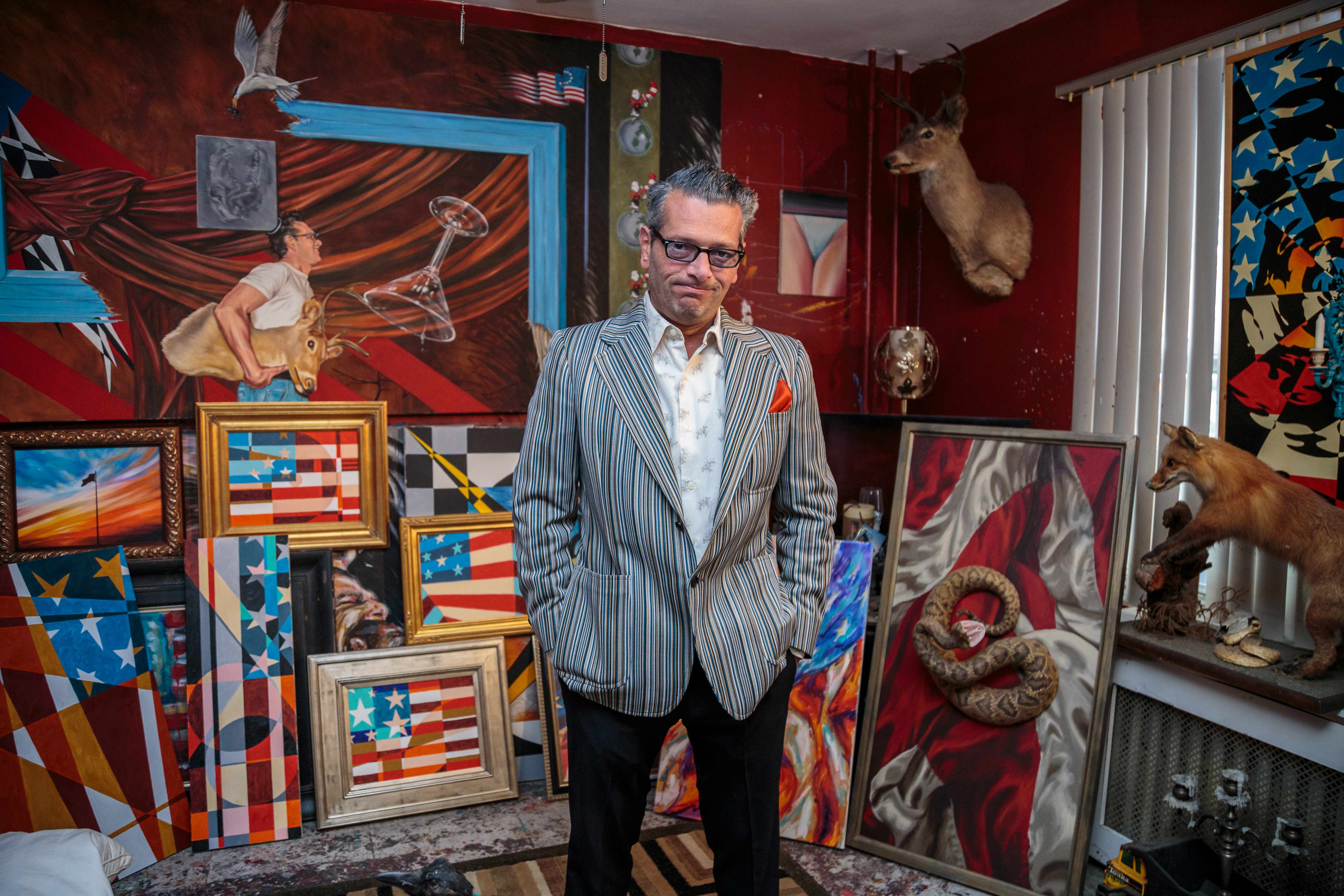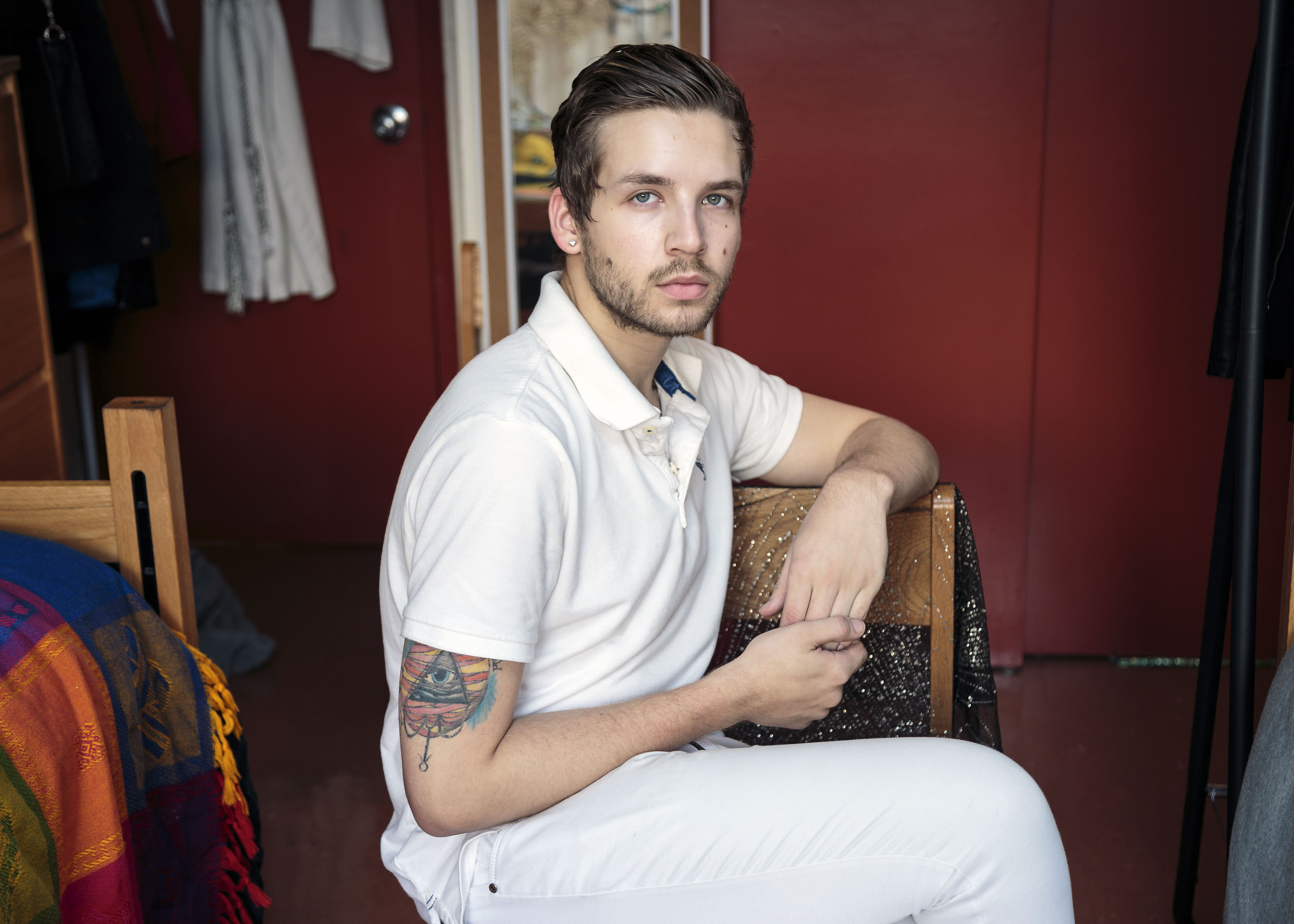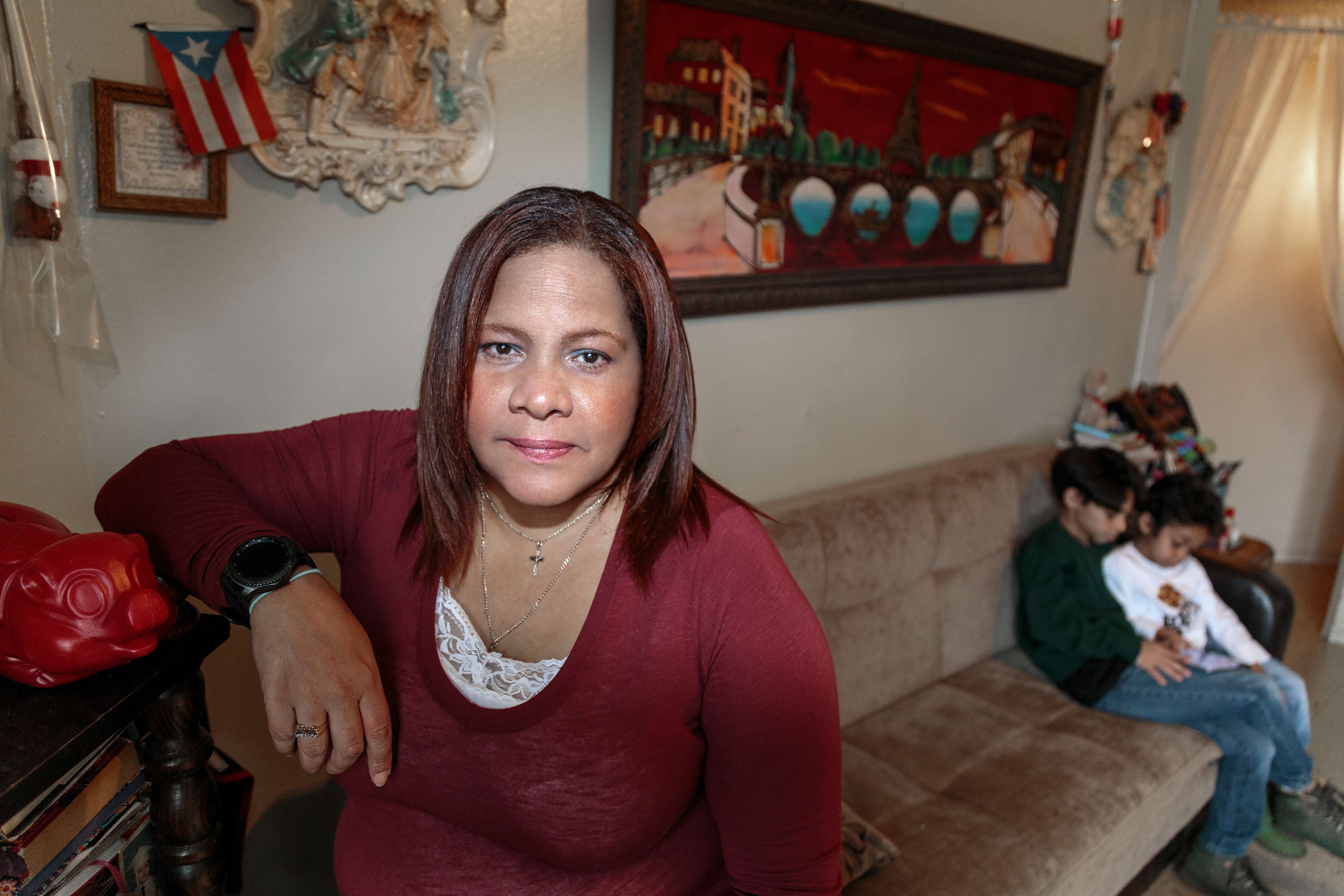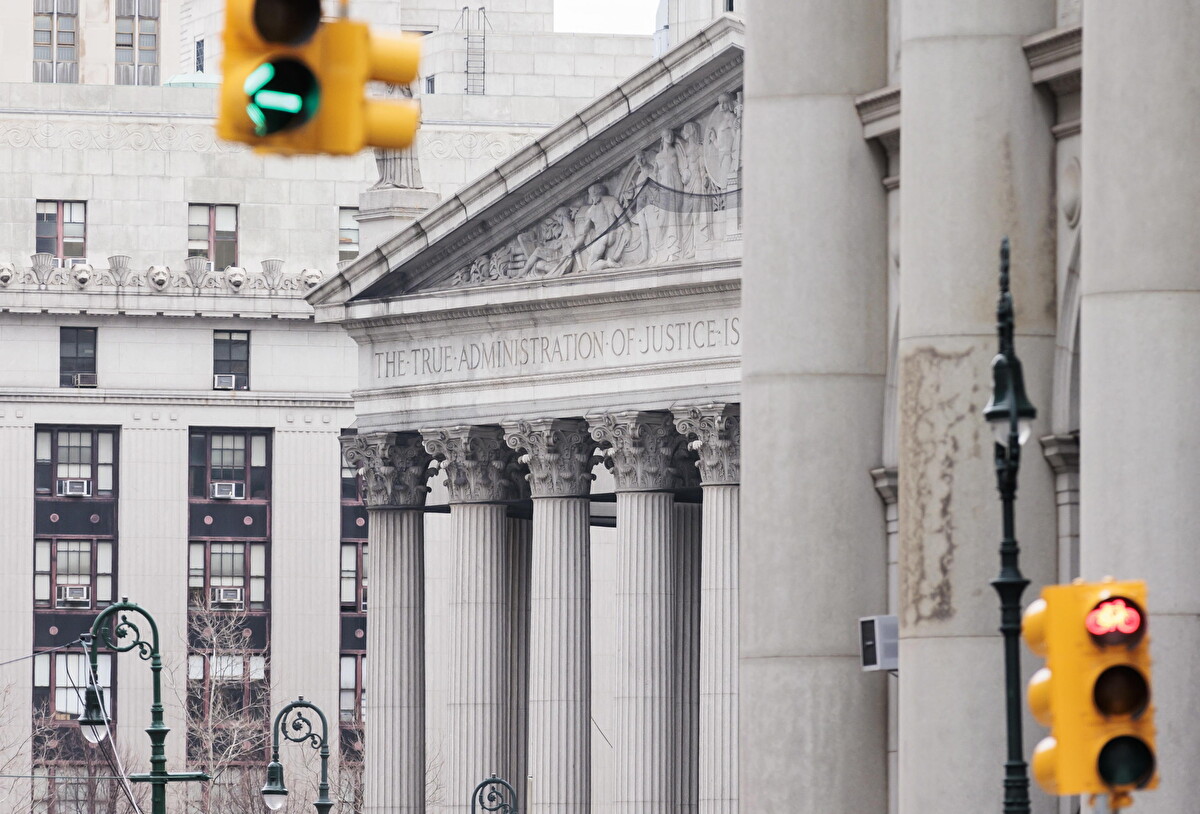
Francesco Di Benedetto is a Calabrian-born photographer who has lived in New York since 2021. He has recently published two books: Trumpland and And So it Happened; the first is a reportage made in the early days after Trump’s election victory, the second is about the HIV status and the drug PrEP.
You’ve been in New York since 2012, so you’ve had enough time to embrace and understand American culture and ask yourself some questions about it. How have you connected with the New York world?
“I grew up in a politically active family, anything to do with social policy drove me through my college years in Italy. Moving to New York allowed me to study further and develop a deeper sense of community. I attended two prestigious institutes: the International Center of Photography in Manhattan and the Pratt Institute in Brooklyn. Understanding the New York world strengthened my principles and my voluntary participation in the LGBT community. I moved to New York with my husband, we got married in Norway because we were not allowed to get married in Italy, I always saw it as a kind of political and revolutionary action.
People in New York always seek contact, they share and cooperate. If you ask me what differences I found between Rome (where I studied) and New York, I would tell you that in Rome there is envy and resentment. Of course there is a strong sense of competition here, but people help each other when they have the opportunity”.

Your latest book Trumpland (2021) is divided into two parts: November 6, 2016, in Staten Island searching for Trump supporters, and the Women’s March on November 12, a few days later. Let’s start with November 6, is it too much if I ask you to make a comparison between what you saw that day and what happened on Capitol Hill?
“I was a Gothamist reporter with my fellow journalist Raphael Pope-Sussman at Staten Island. We arrived there, aware that this part of New York is a Republican-majority district. We were convinced that Hillary Clinton would win that night. It was like taking a trip to midwestern America, I thought of it as an anthropological experiment. And yet years later, as the two curators of Trumpland‘s intro (Andrea Marinelli, Corriere della Sera, and Raphael Pope-Sussman, formerly of Gothamist) rightly noted, it wasn’t hard to find iconography and symbolism in the crowd that stormed Capitol Hill. We visited the studio of Italian-born artist Scott LoBaido, full of stuffed animals, furs, flags, horns. The atmosphere that enveloped us was almost cinematic; it wasn’t hard to detect a caricatured identity in some Trump supporters. When we interviewed two ladies, their political support was even religious, a kind of disturbing extremism.”

Why did you choose a snake as the cover of the book?
“The reason I put one of the stuffed snakes that were pictured in the study on the cover is because even then I saw it as a foreshadowing of something bad. I saw the change in the presidency, from Obama to Trump, firsthand. And I was right, the foreboding I felt was real compared to what happened afterward. There has never been so much talk about death and violence in the United States as there was during those four years, referring of course to my time in the country. Think about Black Lives Matter, or the immigration issues. Being part of the LGBT community myself, I was very afraid that our rights were going to be touched.”

How did you feel taking pictures of the Women’s March?
“The Woman’s March was liberating for me after the shock of the election results. I hadn’t seen a political demonstration of that size since 2012, it almost reassured me, I thought “people will fight back, there will be resistance somewhere”. We’ve seen the resurgence of many grassroots movements, strong female figures in politics like Alexandria Ocasio-Cortez, who is seen as a community hero of sorts here. New York is what you see in these photos, it’s made up of people from many different places. As an Italian, I am also an immigrant, but despite the cultural differences, you can feel like you are at home here. And this feeling is something to defend for many people. During Obama’s presidency, an executive order was signed in favor of, and defense of ,transgender people in the military. In 2017, Trump took a step back”.

There are very strong cultural associations in your November 12 photographs: a person holding a picture of Dr. King, a sign against a fascist America, revisions of Trump’s slogan like make America kind again.
“Yes, you could feel a great sense of social unity and optimism. There were people of color, Asians, Muslims, women…”.
As if minorities together are the majority?
“Yes, exactly.”
Speaking of social issues, about your previous work, “And So it Happened” (2021), a photographic collection supported by strong storytelling. Faces of people who have tested positive for HIV lined up, accompanied by a biographical caption. We enter an intimate terrain where the viewer immediately comes to trust your work. Where did you start?

“During of one my trips in Rome, I met a friend who confessed to me that he was HIV positive. It was a new world to me. We are talking about the capital of Italy, but the environment is negative, there is not enough will to get out of the taboo of the disease, and discriminatory attitudes prevent you from living in a serene way.
With the book And So It Happened, I wanted to represent the diversity of people, in experience and age. HIV is more common among men than women, but I tried anyway. Being part of the LGBT community helped, but I still had to contact associations, for example I met Dana and Maria through Positive Women’s Network. The other way was downloading dating apps, I created a project-specific profile with the book cover and a statement of my intentions. To those who were interested, I sent a form so they could leave me their contact information.”
Is it possible in apps to report if you are HIV positive?
“Yes, it’s not mandatory, but you can do it. Under the filters, people can also write if they take PrEP, which is the preventive medication to avoid contracting the HIV virus and have safe sex.”
Based on your experience, could you make a comparison of the prejudices regarding sexuality between the US and Italy?
“In the United States, especially in cities like New York, Boston, San Francisco, there has been a great change in recent years. Partly just because of the introduction of PrEP (since 2012). I want to open the dialog, make my book a tool to break down walls. If I can, I will go back to Italy and shoot there too. Maybe it wasn’t clear from the beginning in my answers, but this project about HIV was born as a way to send a positive message against fear and terror, which is why I also talk about the importance of PrEP”.

Recently, Biden signed an executive order reinstating Obamacare, making clear the urgency of health care and safety for all, a message shared and welcomed by UNAIDS (The United Nations Programme on HIV and AIDS).
“Health care is a very complex issue, I can tell you that PrEP is distributed here for free, there is a lot of promotion. The information must be done in the right way, but that in itself is a great thing.”
It was recently announced that an HIV vaccine with a 97% antibody response has been developed at the Iavi lab. The executive director of the Vaccine Area, William Schief, presented the results at the International Aids Society HIV Research for Prevention conference. The Iavi and Scripps Research (where Schief is a professor and immunologist) are collaborating with the biotechnology company Moderna to develop and test an mRNA-based vaccine that produces the same beneficial immune cells (the messenger RNA used in the Covid vaccine). The use of mRNA technology could significantly accelerate the development of an HIV vaccine, the researchers said. Is Covid the reason we’re starting to talk about HIV vaccine again?
“I don’t think Covid has obscured HIV, on the contrary, maybe talking about vaccines has reminded us how important research is. In Italy, it might be different, but here we have Anthony Fauci (US immunologist), who has always worked on HIV and AIDS. Culturally we are no longer flooded with taboos and we continue to fight for normality.”

Plans for the future?
“Definitely And So it Happened is not yet finished. I’m doing a Master in Social Work, I want to understand the dynamics of American society even better, and to combine my personal history with my photographic ambitions.”
Francesco di Benedetto’s project has a social profile @andsoithappened.theproject.
I recommend watching it, reading it, but most of all, sharing it. What seems irreparable becomes an opportunity to contribute to a necessary social improvement.












